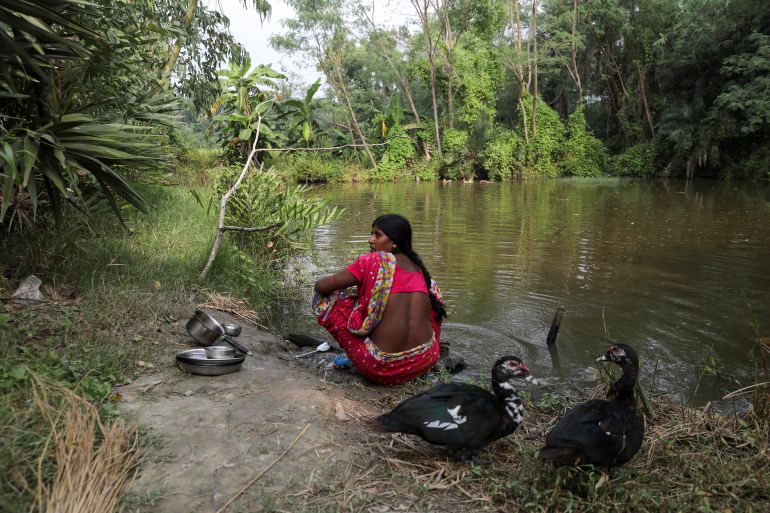
Located in West Bengal state in eastern India and neighbouring Bangladesh, the Sundarbans forest system is a cluster of low-lying islands and represents the largest mangrove ecosystem in the world. It is home to several endangered species and acts as a natural barrier against cyclones, storm surges and other environmental hazards. The forests are also natural agents of carbon capture and sequestration.
But things are changing fast. Four cyclones that hit the eastern coast of India from 2019 to 2021 – Fani, Amphan, Bulbul and Yaas – point to the increasingly unpredictable weather in the Sundarbans caused by climate change and rising sea levels.
Now, the Sundarbans are increasingly “not safe for human habitation”.
The spate of recent cyclones has compounded climate-induced displacement that the people of the Sundarbans have confronted in previous decades. Lohachara was one of the first inhabited islands to disappear under the sea in 1996, forcing residents to relocate to neighbouring islands, often without documents or property deeds.
In the face of limited options for making a living and without sufficient development in the region, migration has become a coping strategy for many residents. There have been several waves of migration within the Sundarbans, often on the same island, to avoid flooding from embankment breaches, tidal bores and storm surges.
Since Cyclone Aila in 2009, distress migration driven by economic vulnerability has resulted in men taking up work as informal migrant workers across India.
Women-headed households in the Sundarbans are more common than in any other area of India because of distress migration. But these households are often marked by debt burdens, a high number of dependents and limited livelihood options.
Meanwhile, increasing land salinity due to severe cyclonic storms and tidal wave action, which carries seawater from the Bay of Bengal into the Sundarbans delta, impedes soil productivity.
Increasing salinity is a leading cause of reproductive health problems among rural women in the Sundarbans, including pelvic inflammation and urinary tract infections. Increasing salinity has also led to a severely degraded mangrove ecosystem, affecting biodiversity and causing a loss of forest reserves that sustain local communities.
The pressure on forest resources also amplifies man-animal conflict in the area. The Sundarbans are home to tiger widows, women whose husbands went into the Sundarbans reserve for fishing or honey collection and were killed by tigers.